LA ALTERIDAD RELIGIOSA Y ÉTNICA EN LOS ESCRITOS DE VIAJES
Judíos, Cristianos y Musulmanes de Siria-Palestina (siglos XII-XVII) Ref. FFI2010-16633
Obadia son of Abraham of Bertinoro
(Italy – Jerusalem, 2cd half of the 15th century)
Italian Rabbinical scholar who is well known as the most famous Mishnah commentator whose family and he himself came from Bertinoro in Forli region in Italy. In the autumn 1486 he started his journey to Jerusalem from his life town Citta di Castello through, Rome, Salerno and Naples. There he embarked in a ship in his voyage to the Land of Israel a long the Mediterranean basin, via Palermo and Messina in Sicily, and Rhodes to Alexandria in Egypt. From there he went by land to Cairo, and from there via Sinai peninsula he went to the Land of Israel. The first place he passed in that country was Gaza in the south. From there he went northward to Hebron in his way to Jerusalem where he arrived two days before Passover (March the 25th) 1488 where he settled and became a prominent leader in the small Jewish community.
His journey as well as his first steps in his new resident are described in a comprehensive letter was sent by him to his father in Italy, which was written six months after his arrival in Jerusalem. This letter was printed with another letter was written by him also in Jerusalem a year later in Darkei Zion for the first time in Kolomea 1886 (as we will see below). In that description he gives a wonderful Geographical and climate view of the maritime and land route he passed in his journey as well as on the daily life in the ship or the caravan. He also draws attention to the nice panoramic view of the places he was staying for a short while in his journey. He also emphasizes his own impression in everywhere he found a Jewish community. He also left his impression about the Jewish life (size of the community, the leadership, economic and spiritual life, etc.).
His journey lasted approximately a year and a half. As we have seen, his journey began with a voyage from Naples to Alexandria in Egypt, traveling via a circuitous route which obliged him to spend extended periods in various ports. He explains this by referring to the “gezera” (decree), issued by the senate of Venice in 1429. This anti-Jewish measure was aimed at preventing Jews from traveling to the Land of Israel. It was a retaliatory act in response to the expropriation from the Franciscans of Mt. Zion, the burial place of David, and the Church of the Holy Spirit above it by the Muslims, ostensibly advised and pressured by Jews. According to Christian tradition, the church was the site of the Coenaculum, the room where Jesus partook of the Last Supper. Its seizure in 1428 led to the imposition of “gezera” the following year for an unknown period of time, until control of the site eventually reverted to the Christians. For this reason those travelling from Italy and the countries in eastern and central Europe attempted to reach the Land of Israel by alternative routes. Rabbi Ovadia writes that he sailed to the east at the autumn of 1486, following an indirect course from the port of Naples via Sicily, Rhodes, and thence to the port of Abu Qir, nearby Alexandria in Egypt. He talks of the severe conflict between the Jews of Jerusalem and ‘priests of Francisco,’ and briefly describes its background:
On Mount Zion, near the Sepulchre of the Kings, the Franciscans have a large Church. The Sepulchre of the Kings also belonged to them a long time ago, but a rich Ashkenazi, who came to Jerusalem, wished to purchase the graves from the King, and so involved himself in strife with the ecclesiastics, and the Arabs then took the graves away from them and have ever since retained them in their own keeping. When it became known in Venice that the graves had been taken from the Catholics through Jews who had come from Christian lands, an edict was published that no Jew might travel to Jerusalem through Venice, but this edict is now repealed, and every year Jews come in the Venetian galleys and even in the pilgrim ships, for there is really no safer and shorter way than by these ships. I wish I had known all this while I was still in those parts, I would not then have remained so long on the journey. The galleys perform the voyage from Venice here in forty days at most.
(
In other Jewish sources from that period, we see that a maritime voyage from Venice to the Near East (Egypt, Syria or the Land of Israel) lasted more or less the same time. But it depends on the climate conditions and some other reasons.
Manuscripts
- 1. "כתבים" מאת "עבדיה מבירטנורה". London – British Library Add. 27078 (Magoliouth 1074). Fol. 141v-155v. Was copied by Abraham of St. Angello in Ferrara 1572. Italian script.
- 2. Moscow – Russian State Library – Günzburg 333. Fol. 163r-173r. Was copied in the 16th century. Ashkenazic script.
- 3. London – Montifiore Library 479. Fol. 248r-263v. Was copied by Abraham Joseph Solomon Graiziano in the 17th century. Italian script.
- 4. New York – Jewish Theological Seminary of America Library – Ms. 3617 (ENA 4155). pp. 1-31. Was copied in the 19th century from London – British Library Add. 27078. Italian script.
Editions
- The first Hebrew edition came out together with German translation by A. Neubauer, 'Zwei Briefe Obadja's aus Bartenuro aus dem Jahre 5248 und 5249', Jahbuch für die Geschichte der Juden und des Judenthums, 3 (1863), pp. 195-221. This edition is based on Moscow – Russian State Library – Günzburg 333 (see below). In a different bilingual edition: Hebrew German, Leipzig 1863, pp. 3-29.
- שני מכתבים מהגאון המפורסם רבינו עובדי' הא' מברטנורא זי"ע אשר כתב לאביו מעה"ק ירושלם בשנת רמ"ח והשני בשנת רמ"ט, Yehudah vi-Yerushalem, ed. By J. M. Salomon, I (1877-1878), pp. 99-101, 109-111, 125-127, 133-135, 149, 151 (Not complete).
- The third edition and some other entitled: דרכי ציון Darkei Zion, Kolomea 1886, fol. 5r-17v. (Photo copy from this edition came out in New York 1955; New York 1970? and Tel-Aviv 1982).
- דרכי ציון Darkei Zion, Munkacs 1895.
- דרכי ציון Darkei Zion, Warsaw 1895, fol. 2r-20v.
- כתבים מרבינו עובדיה מברטנורה, edited by A. M. Luntz, Ha-Meamer, 3 (1920), pp. 93-145.
- המסע לארץ ישראל בשנת רמ"ז-רמ"ח. Berlin 1922, pp. 7-48.
- דרכי ציון Darkei Zion, Piotrkow 1928, fol. 1r-13v.
- דרכי ציון Darkei Zion, Jerusalem 1931, pp. 1-23.
- דרכי ציון Darkei Zion, Bardejov 1934, pp. Fol. 2r-14v.
- J. D. Eisenstein In Ozar Massaoth, New York 1926, pp. 106-121. Second edition, Tel-Aviv 1969.
A. Yaari , Iggrot Eretz-Israel, Jerusalem 1943, pp. 103-138. Second edition, Ramat Gan 1971.- A critical edition of this text: מ"ע הרטום וא' דוד, 'ר' עובדיה מברטנורא ואיגרותיו מארץ-שראל', יהודים באיטליה, מחקרים יוצאים במלאת מאה שנה להולדתו של מ"ד קאסוטו, בעריכת ח' ביינארט, ירושלים תשמ"ח, עמ' 24-100. Second edition came out: מ"ע הרטום וא' דוד, מאיטליה לירושלים, ירושלים תשנ"ז, עמ' 5-83.
Translated editions
A. Neubauer , 'Zwei Briefe Obadja's aus Bartenuro aus dem Jahre 5248 und 5249', Jahbuch für die Geschichte der Juden und des Judenthums, 3 (1863), pp. 225-261.M. Schwab , Voyages. Lettres d'Obadia de Bertinoro (1487-1489), Paris 1866.H. Harboun , Les Voyageurs juifs du XIIIe et XVe si'ecles, Aix en Provence 1988, pp. 163-214.A. V. Morpurgo , 'Viaggi di Rabb. Obadia di Bartenora', Corriere Israelitico, 5 (1866-1867), pp. 57-60, 87-90, 121-125, 151-154, 181-183, 219-221, 277-280, 312-313.G. Busi , Obadyah Yare da Bertinoro, Lettere dalla Terra Santa, Rimini 1991, pp. 7-64.A. Neubauer , in: Miscellany of Hebrew Literature, London 1872, vol. I, pp. 113-146.E. N. Adler , Jewish Travellers in the Middle Ages, London 1930 (New York 1987), pp. 209-244Y. D. Shulman , Pathway to Jerusalem. The Travel Letters of Rabbi Ovadiah of Bartenura, New York, London and Jerusalem 1992, pp. 7-64.J. R. Magdalena Nom de Déu , Relatos de viajes y epístolas de peregrinos judios a Jerusalén (1481-1523), Barcelona 1987, pp. 21-28, 101-147.D. Bousek , Dopis Rabi Ovadji otci a dalsi Hebrejke renesanci cestopisi, Praha 2004, pp. 81-114, 121-127.
German
French
Italian
English
Spanish
Czech
Studies bibliography
- ש' גוטסמן, 'ביאורים לסמ"ג, הלכות ר"ה יו"כ, סוכה ולולב לרבנו מתתיהו טרייויש ורבנו עובדיה מברטנורא', ישורון, ו (תשנ"ט), עמ' עא-קי.
- פ' גראייבסקי, חזון עובדיה: רבנו עובדיה ירא מברטנורא ז"ל, ירושלים תרצ"ח.
- א' דוד, 'המשמעות ההיסטורית של ה'זקנים' בירושלים בדברי רבינו עובדיה מברטנורא', פרקים בתולדות ירושלים בימי הביניים, בעריכת ב"ז קדר וצ' ברס, ירושלים תשל"ט, עמ' 221-243.
- הנ"ל, 'פרשת ה'זקנים' בירושלים בשלהי ימי-הביניים', קהל ישראל, השלטון העצמי היהודי לדורותיו, כרך ב, ימי הביניים והעת החדשה המוקדמת', בעריכת א' גרוסמן וי' קפלן, ירושלים תשס"ד, עמ' 175-195.
- א' הורוביץ, 'על הליכות הדת של היהודים בסוף המאה הט"ו מתוך אגרות ר' עובדיה מברטנורא', פעמים, 37 (תשמ"ט), עמ' 31-40.
- מ"ע הרטום וא' דוד, 'ר' עובדיה מברטנורא ואיגרותיו מארץ-שראל', יהודים באיטליה, מחקרים יוצאים במלאת מאה שנה להולדתו של מ"ד קאסוטו, בעריכת ח' ביינארט, ירושלים תשמ"ח, עמ' 24-108.
- א' טואף, 'ידיעות חדשות על חיי ר' עובדיה מברטנורא', פעמים, 37 (תשמ"ט), עמ' 24-30.
- ד' יעקבי, 'הפרנציסקאנים בהר ציון ויהודי ירושלים במאה הט"ו, עיון מחודש', קתדרה, 39 (תשמ"ו), עמ' 51-70.
- י"ד לרנר, 'פירוש הרע"ב והגניזה הקהירית', ספר זכרון לשמואל בלקין, ניו יורק תשמ"א, עמ' 128-131.
- י"ד לרנר, רבינו עובדיה מברטנורא, ירושלים תשמ"ח.
- י' פראוור, 'מנזר הפרנציסקאנים בהר ציון ויהודי ירושלים במאה הט"ו', ידיעות החברה לחקירת ארץ ישראל ועתיקותיה, יד (תש"ח), עמ' 15-20.
- מ"ד קאסוטו, 'מכתבי ר' עבדיה מברטינורו', הצופה לחכמת ישראל, י (תרפ"ו), עמ' 296-302.
- א' ריינר, 'הנהגת הקהילה בירושלים בשלהי התקופה הממלוכית: תעודות ובירורים בשולי פרשת הזקנים"', שלם, ו (תשנ"ב), עמ' 23-81.
- א' שוחטמן, 'ר' עובדיה מברטנורא –פרשן או פוסק', פעמים, 37 (תשמ"ט), עמ' 3-23.
M. Arkin , 'Travellers tales three visitors to Jerusalem', Jewish Affairs, 51, 2 (1996), pp. 70-75.G. Busi , 'Ovadyah da Bertinoro come viaggiatore', Ovadyia Yare da Bertinoro e la presenza ebraica in Romagna nel Quattrocento, a cura di G. Busi, Torino 1989, pp. 21-33.G. Busi , 'Sangue e purità rituale nel commento alla Mishnah di Ovadjah da Bertinoro (ca 1450-1516)', Atti della VI Settimana di Studi: "Sangue e antropologia nella teologia" (1989) 1097-1105.L. M. Caro , 'Rabbi Ovadya' da Bertinoro e il suo supercommentario a Rashi', Hebraica; miscellanea di studi in onore di Sergio J. Sierra per il suo 75. compleanno. A cura di F. Israel, A.M. Rabello, A.M. Somekh. Torino: Istituto di Studi Ebraici Scuola Rabbinica "S.H. Margulies - D. Disegni", 1998, pp. 165-168.A. Chiesa , Il supercommentario di 'Ovadyah da Bertinoro a Rasi, Ovadyia Yare da Bertinoro e la presenza ebraica in Romagna nel Quattrocento, a cura di G. Busi, Torino 1989, pp. 35-46.E. S. Horowitz , 'Towards a social history of Jewish popular religion: Obadiah of Bertinoro on the Jews of Palermo', Journal of Religious History, 17, 2 (1992), pp. 138-151.B. Kern-Ulmer , 'Jüdische Reisende des 15. Jahrhunderts in Ägypten', Kairos, XXIX (1987), pp. 233-251.M. Mortara , 'Note al viaggio di R. Obadja di Bertinoro', Corriere Israelitico, 5 (1866-1867), pp. 369-372, 6 (1867-1868), pp. 54-56.S. Simonsohn , 'Divieto di trasportare ebrei in Palestina', Italia Judaica, II (1986), pp. 39-53.G. Tamani , 'La diffusione del comment alla Misnah di 'Ovadyah Yare da Bertinoro', Ovadyia Yare da Bertinoro e la presenza ebraica in Romagna nel Quattrocento, a cura di G. Busi, Torino 1989, pp. 47-56.A. Toaff , ''Ovadiah da Bertinoro nella realta italiana del suo tempo', L’interculturalità dell’ebraismo, a cura di M. Perani, Ravenna 2004, pp. 257-268.



